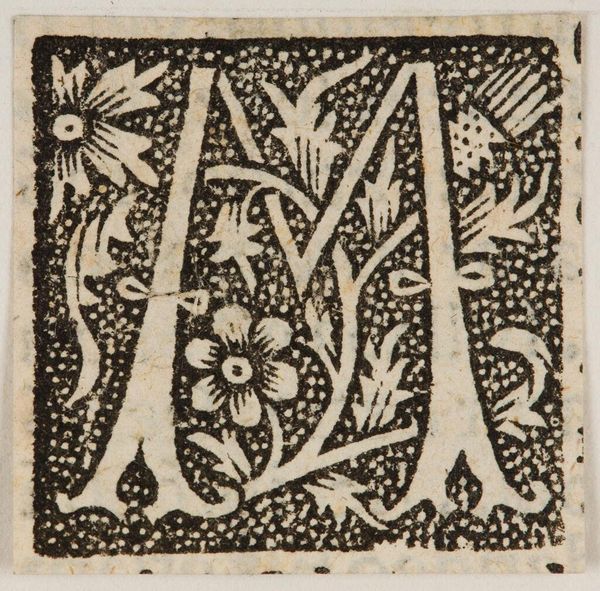
Dimensions: 50 x 150 cm
Copyright: Public domain
Curator: Pierre Bonnard painted "The Dressing Gown" in 1892. What a fascinating interplay of figure and ground. Editor: It strikes me as rather melancholic, actually. The woman’s posture is closed off, almost hidden within this patterned fabric. There’s a real sense of interiority. Curator: Intimism indeed. Let’s look closer; the overall composition presents an almost flattened perspective, emphasizing surface over depth. Bonnard used oil paint, likely with an impasto technique to enrich the textile and emphasize a play of geometric patterning within the subject's dress. Editor: Speaking of textiles, the fabric seems like an animal print, something rather unexpected in a dressing gown of that era. Do you see a subtle connection here between feminine identity and something feral, something perhaps stifled by societal expectations? Curator: That's quite an association! However, consider how he manipulates shape; see how the rounded curves on the dressing gown contrast and interact with the geometric flatness of the space to shape an intriguing tension? I think Bonnard intended the spatial ambiguity itself as a critical pictorial element. Editor: Absolutely, but even artistic strategies can have political implications. He situates his subject within constraints. Is the work suggesting how women might feel enclosed by their environments and the constant demands of presentation? Curator: I perceive an ambiguity there too; we simply cannot ignore Bonnard's meticulous concern with the formal properties. Consider his use of complementary yellows and browns which structure a visually stunning effect... It’s impossible to ignore his radical application of compositional structures. Editor: I find it incredibly telling how Bonnard transforms the everyday into something so evocative of a deeper emotional reality for the sitter, especially when we view it from the perspective of social pressures for women at that time. Curator: Regardless of our varied interpretations, it’s clear Bonnard gives us a unique synthesis between surface ornamentation and subjective experience. Editor: Ultimately, this piece is so compelling precisely because it allows for so many nuanced readings about our social context and the subjective female experience.
Comments
No comments
Be the first to comment and join the conversation on the ultimate creative platform.














